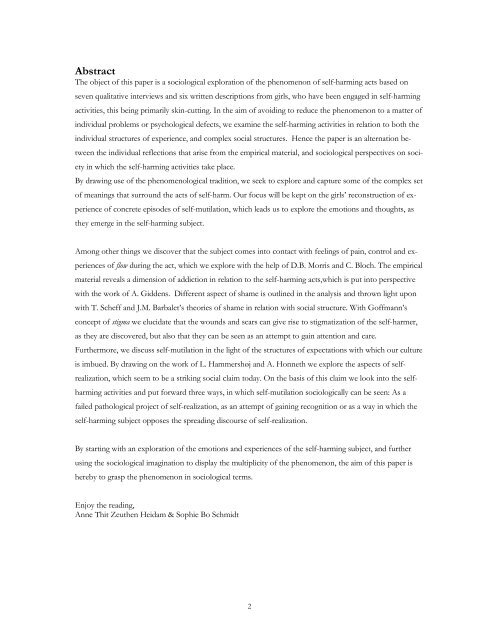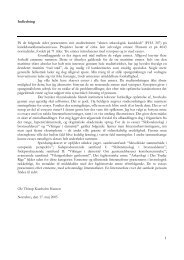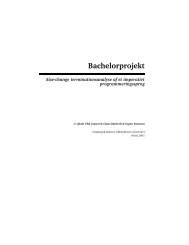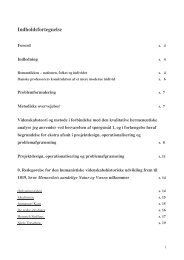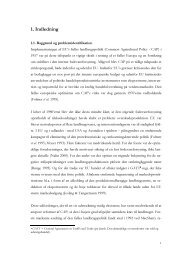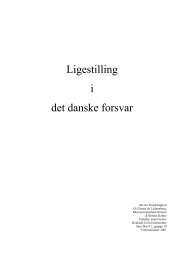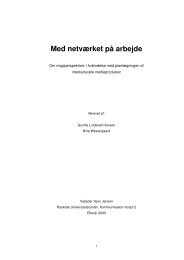Kniven i armen
Kniven i armen
Kniven i armen
You also want an ePaper? Increase the reach of your titles
YUMPU automatically turns print PDFs into web optimized ePapers that Google loves.
Abstract<br />
The object of this paper is a sociological exploration of the phenomenon of self-harming acts based on<br />
seven qualitative interviews and six written descriptions from girls, who have been engaged in self-harming<br />
activities, this being primarily skin-cutting. In the aim of avoiding to reduce the phenomenon to a matter of<br />
individual problems or psychological defects, we examine the self-harming activities in relation to both the<br />
individual structures of experience, and complex social structures. Hence the paper is an alternation be-<br />
tween the individual reflections that arise from the empirical material, and sociological perspectives on soci-<br />
ety in which the self-harming activities take place.<br />
By drawing use of the phenomenological tradition, we seek to explore and capture some of the complex set<br />
of meanings that surround the acts of self-harm. Our focus will be kept on the girls’ reconstruction of ex-<br />
perience of concrete episodes of self-mutilation, which leads us to explore the emotions and thoughts, as<br />
they emerge in the self-harming subject.<br />
Among other things we discover that the subject comes into contact with feelings of pain, control and ex-<br />
periences of flow during the act, which we explore with the help of D.B. Morris and C. Bloch. The empirical<br />
material reveals a dimension of addiction in relation to the self-harming acts,which is put into perspective<br />
with the work of A. Giddens. Different aspect of shame is outlined in the analysis and thrown light upon<br />
with T. Scheff and J.M. Barbalet’s theories of shame in relation with social structure. With Goffmann’s<br />
concept of stigma we elucidate that the wounds and scars can give rise to stigmatization of the self-harmer,<br />
as they are discovered, but also that they can be seen as an attempt to gain attention and care.<br />
Furthermore, we discuss self-mutilation in the light of the structures of expectations with which our culture<br />
is imbued. By drawing on the work of L. Hammershøj and A. Honneth we explore the aspects of self-<br />
realization, which seem to be a striking social claim today. On the basis of this claim we look into the self-<br />
harming activities and put forward three ways, in which self-mutilation sociologically can be seen: As a<br />
failed pathological project of self-realization, as an attempt of gaining recognition or as a way in which the<br />
self-harming subject opposes the spreading discourse of self-realization.<br />
By starting with an exploration of the emotions and experiences of the self-harming subject, and further<br />
using the sociological imagination to display the multiplicity of the phenomenon, the aim of this paper is<br />
hereby to grasp the phenomenon in sociological terms.<br />
Enjoy the reading,<br />
Anne Thit Zeuthen Heidam & Sophie Bo Schmidt<br />
2


